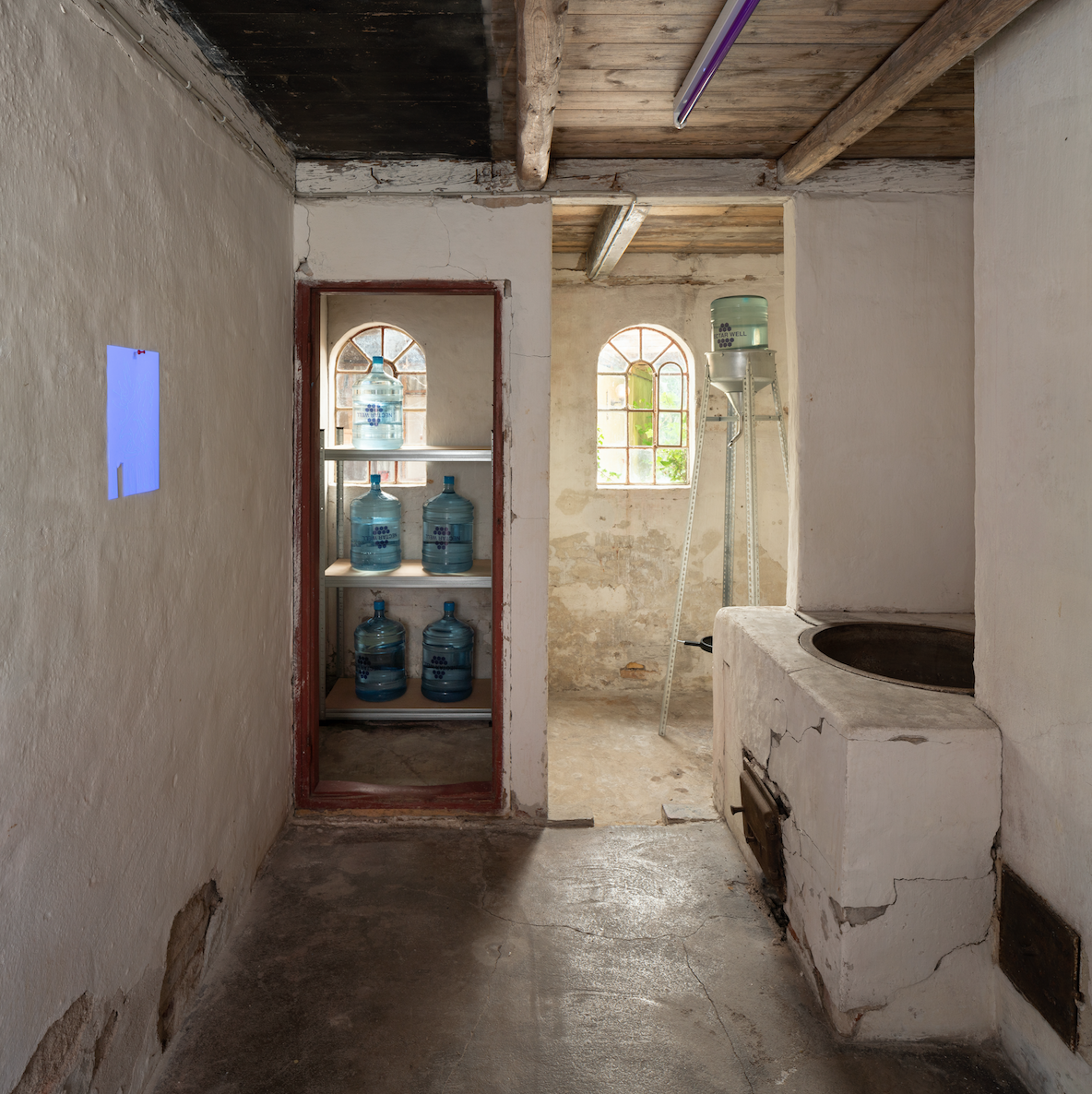PS44
“Burnout”
-
Emilia Bergmark

“The environment is not a commodity but it is rather the biosphere that sustains all life that we know of” – John Bellamy Foster in Ecology Against Capitalism.
BURNOUT is a newly commissioned installation by Swedish artist Emilia Bergmark. The work, inspired by Bergmark’s interest in humans’ commodification of nature is conceived as an allegorical narrative in response to the landscapes around us, which are permeated, conceived and organized by human logic and production apparatuses.
Bergmark exhibition, seemingly a pollinators- friendly environment designed by an interior architect, consist of a number of interior elements often found in the interior décor of institutional contexts. This scenography is constructed as the waiting room of a fictional institution, in a time-pressured culture of high-performance. In such a space, where we are typically simply asked to wait, in a state where decisions are deferred and we are held in a state of limbo, we become the witnesses of an unfolding dialogue between two other waiting entities: a burned-out working-bee from the honey industry in the outskirts of Denmark and a rowdy male bumblebee from Sweden.
The conversation between the two bees touches upon issues of working conditions and pressing contemporary environmental concerns. The unpaid bee in the piece burnout reminds us of George Orwell’s novel Animal Farm, where exploited animals organize a rebellion to take over a farm. Bergmark uses Orwell’s same strategy of humanizing animals in order to create an allegory and a commentary on contemporary social, political and environmental issues.
The artist has amplified certain qualities of the objects through the use of elements conceived to meet a “bees-perspective”: a bench with six legs, a woolen room divider with a motif of cultivated fields, a still life with flowers and insects captured in UV light and a drinking fountain containing sugar-water. The sugar water is a recurring element in the exhibition. It refers to a common practice of beekeepers feeding colonies artificially. Bergmark has invited artist Maria Gondek to contribute to the show with the work ‘Nectar Well’ �” offering sugar water to the visitors. In her piece Bergmark draws a parallel between human working conditions within the capitalistic system of production and the unpaid work that bees perform pollinating crops and producing honey within the same economic system.
Here in BURNOUT, the post-human position is not so much of an attempt to reject or eradicate the human view on the world, but rather aims to show a plurality of perspectives. We look from a non-human perspective still being human beings. This simple change of perspective has the potential of refreshing our societal visions and values so our relation with the environment can be more ethical and empathetic to a more sensitive symbiosis between humans or non-humans.
Julia Rodrigues, curator




